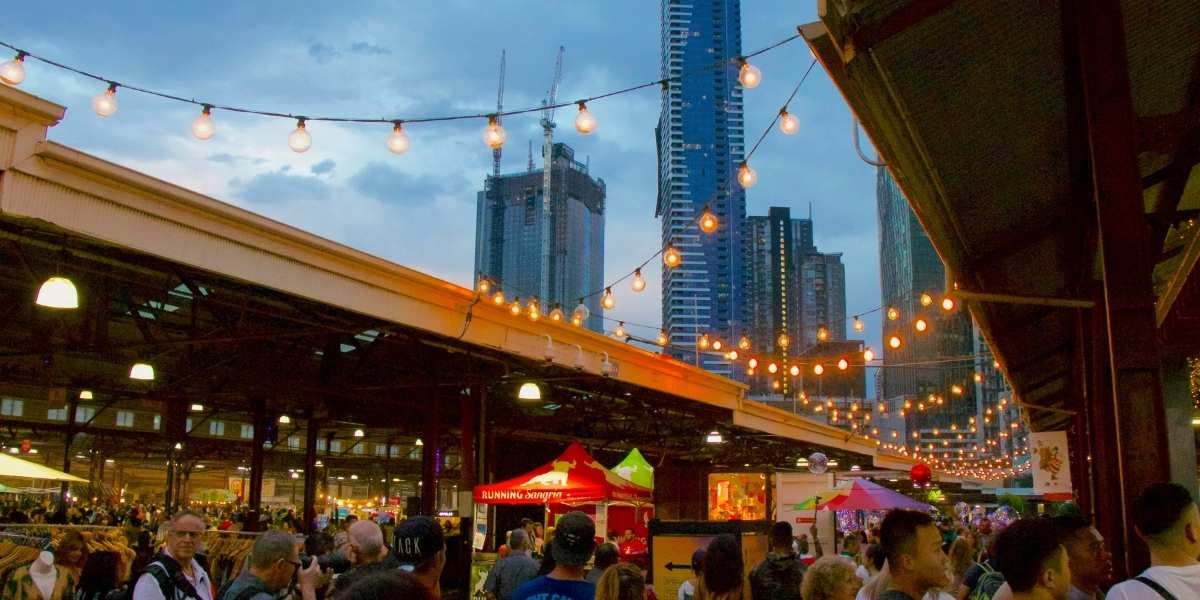How Are Night Markets Redefining San Francisco’s Nightlife?
San Francisco’s nightlife has taken a different turn, less about velvet ropes and more about outdoor energy, shared spaces, and open streets. Instead of traditional clubs and lounges, night markets are emerging as some of the city’s most dynamic social venues. These community-driven events blend food stalls, live performances, and street vendors into lively gatherings that stretch into the evening, offering a distinctly different way to enjoy the city after dark.
The shift hasn’t happened overnight. It’s been shaped by changing social habits, greater interest in accessible entertainment, and a renewed focus on neighborhood pride. Night markets bring all of that together, allowing locals and visitors to explore San Francisco’s nightlife in a more casual, open-air setting.
Markets in neighborhoods like Chinatown, the Sunset, and the Castro are leading this evolution. They’re attracting thousands with a mix of multicultural flavors, street performances, and artisan booths, all without the barrier of a cover charge or dress code. People can eat, browse, and mingle in an atmosphere that feels relaxed but still electric with energy.
Read also: Bhangra & Beats Night Market: A Celebration of San Francisco’s Diverse Culture
What Makes These Night Markets Stand Out in San Francisco?

Photo Credit: Unsplash.com
Each night market brings its own identity, shaped by the surrounding community. In the Sunset District, the evening market lights up several blocks with a mix of street food, ranging from mochi donuts to grilled skewers, paired with live music and family-friendly games. Crowds often return for the familiar rhythms of local DJs and dance groups who turn the pavement into a performance space.
The one in Chinatown pulls in thousands, transforming Grant Avenue with rows of red lanterns, cultural showcases, and up to 40 vendor booths. The setting becomes an immersive celebration of Asian heritage, where lion dances and traditional sweets create a vibrant link between old customs and new nightlife energy.
In the Castro, the night market takes on a more celebratory tone. Set against colorful storefronts and glowing string lights, it leans into bold performance, from drag shows to community art installations. Music spills out from temporary stages while food trucks line the block, many offering plant-based or locally sourced menus.
What all these markets share is a shift from the indoors to the outdoors. Instead of enclosed venues, nightlife is spilling onto city streets in a way that feels communal rather than exclusive. That’s part of the reason they’ve become such popular alternatives, especially among those looking for something social but less rigid than traditional nightlife.
Why Are Markets Becoming a Core Part of SF Nightlife Culture?
Several practical and cultural factors are fueling the popularity of night markets across San Francisco. After several years of reduced public gatherings, there’s been a strong return to events that feel open and welcoming. Night markets, by nature, don’t require tickets, reservations, or a specific dress code. That lowers the barrier for participation and invites people of all ages and backgrounds.
From an economic perspective, they also provide small businesses and street vendors with regular platforms to connect with customers. This includes food stalls, handcrafted goods, vintage apparel, and niche local items, many of which don’t have permanent storefronts. The result is a browsing experience that feels fresh every time, often with new vendors appearing month to month.
Some areas are also participating in what’s known as “entertainment zone” pilots, which allow for relaxed regulations around street events and to-go alcohol in designated areas. This gives organizers the freedom to shape events that feel more spontaneous and festive without requiring a complex permitting process.
Culturally, there’s a growing preference for shared, less transactional nightlife. Instead of sitting at a table for hours or navigating loud club scenes, night markets offer movement, choice, and interaction. People come for dinner but stay for the atmosphere. It becomes about more than just a single destination; it’s a mix of sights, smells, sounds, and conversations spread across several blocks.
What Can Visitors Expect from a Night Out at One of These Markets?

Photo Credit: Unsplash.com
While each night market has its own character, most follow a similar rhythm. Streets are closed to traffic, lighting is strung across vendor lanes, and the smell of grilled meats, sweet pastries, or deep-fried treats carries through the crowd. It’s not uncommon to stumble upon a small stage with a dance performance mid-set, or a corner booth featuring live painting or interactive art.
Here’s a quick look at what’s typically found at these markets:
- Street food stalls offering local and international flavors
- Artisans and small-batch makers selling jewelry, home goods, or prints
- Live music and cultural performances
- Family zones with games, crafts, or workshops
- Community resource booths and pop-up exhibits
- Drinks-to-go in entertainment zone areas (depending on location)
The layout encourages wandering. No fixed schedule is required. People might spend a few minutes at a taquito stand, then drift toward a live jazz set or pause to try handmade dumplings. It’s more fluid than a sit-down dinner or single-venue plan, which adds to its growing appeal among a broad crowd.
Read also: Experience the Haunted Tavern Cocktail Event: A Night of Spooky Fun
How Is San Francisco Supporting This Nightlife Shift?
City planners and neighborhood organizers are increasingly recognizing the value of night markets. Several districts are working with local agencies to pilot policies that support outdoor nighttime events. That includes extending street closure permits, easing restrictions for small business vending, and creating event templates that other communities can adopt.
These changes are not just about entertainment. They’re part of a broader effort to activate public spaces in ways that reflect each neighborhood’s identity. Night markets help support local economies, highlight cultural traditions, and give people reasons to return to areas they might not regularly visit.
The success of these markets is also sparking interest from additional neighborhoods looking to host their own versions. As that trend continues, it’s likely that night markets will become not just seasonal features but regular fixtures in the city’s nightlife rhythm.












